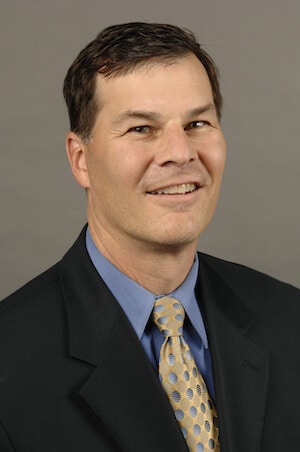Being able to breathe comfortably through your nose affects more than just airflow. It impacts your sleep, energy levels, and your comfort while doing basic activities like exercising. When the nasal septum is misaligned, it can block one or both airways and lead to snoring, mouth breathing, sinus pressure, or poor sleep quality.
Septoplasty is a functional nasal surgery that can help improve airflow by reshaping the septum. At New England Cosmetic Surgery & Laser Center, Dr. John Lazor has extensive experience performing nasal surgeries that focus on breathing function. If you are in Weymouth or the surrounding areas and are dealing with long-term nasal blockage or congestion, this procedure may help.
What Is Septoplasty?
Septoplasty is a surgical procedure that corrects a deviated septum by repositioning and reshaping the cartilage and bone that separate the nostrils. A crooked or uneven septum can disrupt airflow through the nose, making it harder to breathe and contributing to chronic congestion or sinus issues. During surgery, the goal is to straighten the septum without removing more tissue than necessary, preserving the structure of the nose while improving function. The procedure is performed through the nostrils, so there are no external incisions.
Initial Consultation and Evaluation
We begin with a consultation to examine your nasal structure and understand your symptoms. During this visit, we will ask about your breathing patterns, history of sinus infections, allergies, and any previous nasal trauma or surgery. A nasal exam allows us to assess how the septum is positioned and whether it is contributing to blockage or discomfort. If nasal septoplasty is appropriate, we will walk you through what to expect from the surgery and recovery. We want you to feel informed and comfortable before moving forward.
Preparing for Surgery
Once surgery is scheduled, we will review your medications, provide preoperative instructions, and go over how to get ready in the days leading up to your procedure. Stop taking blood-thinning medications or supplements that can increase the risk of bleeding unless we instruct otherwise. Arrange for a ride home after surgery and set up a place to rest with your head elevated. Plan to avoid alcohol, smoking, and strenuous activity as your surgery date approaches.
The Day of Your Surgery
Arrive on time and follow the pre-op instructions we reviewed, including fasting if required. After check-in, we will get you settled and review the plan again before anesthesia is administered. The surgery typically takes one to two hours, and you will rest in the recovery area afterward until you are ready to go home. Most patients go home the same day, and discomfort is usually manageable with prescribed medication.
What Happens During Septoplasty
Anesthesia
We perform septoplasty surgery under local anesthesia with sedation or general anesthesia to keep you comfortable throughout the procedure. An anesthesiologist monitors you the entire time and adjusts medication as needed. You will not feel pain during the surgery, and most people wake up with only mild discomfort.
Surgical Techniques
To access the septum, we make a small incision inside the nose and lift the mucosal lining that covers the cartilage and bone. Once we reach the deviated portion, we either reposition it or remove the parts that block airflow. We take care to preserve as much natural structure as possible while correcting the obstruction. If necessary, we reshape parts of the cartilage to support a straighter septum.
Combination Surgeries
We often perform septoplasty at the same time as cosmetic nasal surgery when patients want to address both form and function. Combining procedures can reduce overall downtime and avoid the need for multiple recoveries. Sometimes we also perform chin augmentation or other facial procedures at the same time. If you are thinking about rhinoplasty or other nasal enhancements, we can discuss options during your consultation.
Recovery Timeline and Expectations
Week One
Expect some swelling, congestion, and mild pressure for the first few days after surgery. Keep your head elevated, apply cold compresses as directed, and rest as much as possible. Breathing through your nose may feel difficult at first, especially if we place internal splints. Avoid blowing your nose and stick to light activity while your body starts to heal. We will see you for a follow-up to check your progress and remove splints if we used them.
Weeks Two Through Four
You should start to notice gradual improvement in your breathing as swelling decreases. Mild congestion and occasional nasal dryness may continue, but these symptoms usually fade with time. Saline spray can help keep the nasal passages moist while the lining heals. You can return to normal daily activities as you feel ready, but wait to resume strenuous exercise until we give you the go-ahead. Most of the external signs of surgery resolve by the end of this phase.
One to Three Months
As healing continues, airflow improves steadily and breathing becomes more comfortable. The internal tissues need time to fully settle, so some days may feel better than others. We may schedule a check-in visit during this period to evaluate your long-term results and answer any questions. Once the swelling resolves completely, you can get a better sense of the full outcome of surgery.
Tips for a Smoother Recovery
Keep Your Head Elevated
Sleep with your head propped up on two pillows or rest in a recliner to help reduce swelling and promote drainage. Lying flat increases pressure in the nose and can make congestion feel worse. Elevation can also make the first few nights after septoplasty surgery more comfortable, especially when breathing feels restricted. Try to avoid bending over or lowering your head for long periods during the first week.
Using Your Humidifier
Run a cool mist humidifier in your bedroom to keep the air moist while your nasal passages heal. Dry air can cause irritation and make crusting more noticeable as the tissues recover. A humidifier helps loosen mucus, soothe dryness, and support your breathing. Clean the unit regularly to prevent the buildup of dust or bacteria in the water tank.
Guidelines on Nose Blowing and Sniffing
Avoid blowing your nose until we tell you it is safe to do so. Forceful blowing can disrupt healing or shift internal structures that we just corrected. If you need to clear your nose, dab gently with a tissue or use saline spray to flush out mucus. Try not to sniff too hard, since that can draw fluid into healing tissues and slow down recovery.
When to Call Your Doctor
Contact us if you notice persistent bleeding, a high fever, or pain that does not improve with medication. Swelling that gets worse instead of better can also signal a problem. If breathing becomes more difficult rather than easier, let us know right away. Most symptoms after septoplasty of the nose improve gradually, but unexpected changes should not be ignored. We are here to help guide you through the recovery process and want to hear from you if anything feels off.
Call Us Today for Information About Septoplasty in Weymouth, MA
Septoplasty can improve airflow, reduce nasal congestion, and help you breathe more comfortably throughout the day and night. At New England Cosmetic Surgery & Laser Center, Dr. John Lazor brings over two decades of experience in facial surgery and focuses on procedures that enhance both form and function. We serve patients from Weymouth, MA, and surrounding areas including Boston, Hingham, Braintree, Quincy, Holbrook, Hull, Rockland, Randolph, and Milton.
To schedule a consultation or ask a question about septoplasty, contact us online or call 781-337-5665.


